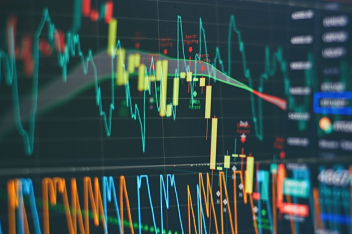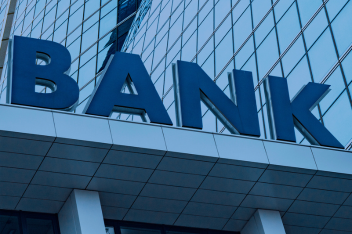Commencing January 2022, distributions to investors from the Switzer Dividend Growth Fund (Quoted Managed Fund) will change from quarterly to monthly. This change to monthly payments will make the fund more contemporary for investors seeking regular income.
During this live webinar, Chairman of Switzer Asset Management, Peter Switzer spoke to Portfolio Manager, Marcus Bogdan to provide an update on the Fund and the outlook for the year ahead, as well as explain what this change means for investors.
Transcript
Peter Switzer (PS): Hello and welcome. Thank you for joining us in this exclusive webinar for investors in the Switzer Dividend Growth Fund. Now before we begin, some brief housekeeping and a message from our compliance team. Firstly, this is a live and interactive session, so we would love to hear from you. If you have any questions, you would like us to address, please submit them via the question box in the control panel on your screen, and we’ll endeavour to get these questions answered towards the end of the session, or if we don’t have time for that, we’ll make sure someone in our office contacts you with an answer to your question. Secondly, this webinar is for educational purposes and of a general nature only. It does not constitute personal advice and must not be acted on or relied upon. The presentation is not an offer, recommendation, or solicitation. Now, today we have the pleasure of speaking to Marcus Bogdan, the Portfolio Manager of the Switzer Dividend Growth Fund. We’re going to talk to Marcus about his views for the year ahead and discussing some exciting changes we’ve made to the Switzer Dividend Growth Fund. Let’s kick off, and I welcome you, Marcus, to the webinar.
Marcus Bogdan (MB): Good morning, Peter, terrific to be here.
PS: All right mate, let’s just try and set the broader scene, how did the fund perform in 2020?
MB: Well, it was a remarkable year, 2021, for Australian equity markets, and the portfolio was up 16.6% for that 12 months, so it was a remarkable recovery in markets globally, and that was based on an extraordinarily uplift, a V-shape recovery in earnings. We saw the full impact of the Coronavirus in 2020 where we saw markets fall very, very sharply and profits and dividends fall very, very sharply, so 2021 was a year of recovery, and the recovery was much stronger than anticipated, both in terms of the economic growth that Australia was able to deliver, and, importantly for investors, the recovery in earnings and dividends that we saw.
PS: All right mate, I’m glad you corrected me, I did say 2020, I clearly meant 2021. All right, let’s just unpack what you’ve said then. So, it’s been a recovery, are dividends back to where they were before the pandemic or have they simply improved on 2020 when lots of companies, for the fear factors around the pandemic, just had to cut their dividends?
MB: Yeah, it’s a really important point because earnings now have recovered fully from the pandemic, earnings now are above where they were at pre-pandemic levels, and dividends have certainly recovered, but overall, they haven’t recovered to the same level of the earnings, and so our expectation, and this is quite important going forward, is that we do expect that that dividend recovery will continue.
PS: Yeah, and I guess the important factor is going to be whether something like Omicron dissipates in coming months and we get the economic boom, the rebound that many economists are predicting.
MB: Well, after each variant that we’ve had, Australia has absolutely been able to demonstrate a very sharp recovery. This is more complicated, the Omicron virus is more complicated because it has been more disruptive to supply chains and to staffing levels, but we do very much believe that those disruptions are short-term in nature, and we are already now starting to see evidence of a strong recovery in a range of different economic indicators in terms of spending, and also the real pressure points that we were seeing in supply chains are still there, but they are now abating, and we’re seeing that certainly through the consumer staples and companies that have got significant places in the supply chain. So, we expect a recovery, there’s already evidence of a recovery, and what we’ll start to see in the reporting season is how companies have navigated through that. Undoubtedly, costs have risen, and it’s the way that those companies have been able to absorb those costs and whether they’ve been able to pass them on to the end markets that they’re operating in.
PS: Okay, so what is your outlook for the market and the fund in the year ahead?
MB: We do see moderation in earnings, and that’s to be expected given the strong growth that we had last year, but importantly, we do still see earnings growth, and ultimately, markets are directed by the direction of earnings, and we expect that earnings growth will remain positive in 2022, and the expectation is, for this financial year, that earnings will be growing at around 10%, which is around the long-term average, and importantly, we expect to see growth in dividends as well. It’s also important to underline that balance sheets for Australian corporates are very, very sound, so gearing levels and the capacity for companies to expand their operations, and also enjoy things like mergers and acquisitions which is an important part of economic activity as well.
PS: Okay, so that’s the market, how is the fund itself positioned to benefit from those, or that, fairly rosy outlook?
MB: Well, we do expect that there will be volatility in the next six months, and we certainly saw that in January as the market has navigated Omicron and I think we’re now seeing that recede, and the other significant element that has occurred has been the adjustment and the pivot that we’re seeing in central banks in terms of tightening financial conditions. Now, the market is digesting that at the moment, and that’s why we’re seeing a higher level of volatility, but importantly, the economic growth drivers behind that still remain very, very strong. But given that backdrop, our emphasis and our premise, really, for investing over the long term has been that focus on the higher-quality Australian corporates, those industry leaders that have got very strong positions in terms of market share, that are in growing parts of the economy, and so we do like the leaders, we like companies like Commonwealth Bank, BHP, Macquarie, CSL, they’re the ones that we expect to be able to deliver consistent earnings growth over the forecast period, and they’ve got very, very strong positions in their industries, and so that’s the emphasis, and that’s important in terms of being able to deliver dependable dividends for our investors.
PS: On that subject, what kind of yield do you expect the fund to generate for investors moving forward?
MB: We’ve recently added National Australia Bank to the portfolio, and the dividend yield at the moment is around 4.1%. Now we expect that that will be maintainable given the outlook that we’ve got for both earnings and dividends.
PS: Right, okay. So, if you look at the overall yield that the fund might generate, and it’s not something you can be certain about, but why don’t you tell us what you achieved in 2021 and what you think is achievable in 2022?
MB: So, in 2021, the dividend yield was around 3%, and now that’s, and then you’ve got to add franking on top of that. In recent times, we’ve added to companies which have got a higher dividend yield, and so we’ve actually been able to push the dividend yield higher, to be over 4%. Now we expect that that should be maintainable over the forecast period, and it’s companies with very, very stable earnings and dividends, companies in the telecommunications sector, Spark New Zealand, Telstra, and the banks that we expect to not only be able to deliver growth in dividends in 2021, but also to see those dividends growing in 2022 as well, so we expect positive momentum in dividends for this calendar year.
PS: In a sense, Marcus, is it a bit like pivoting because you kind of expected plenty of growth and that number you gave us was at 16.6% or something like that, a lot of it was driven by growth and as you said, the dividend was more like 3, this year you think the growth will be less because a lot of the big bang for the buck has already happened, so and that’s why you’re pivoting to try and get more yield this year?
MB: Yes, indeed, we’re in a slowing earnings environment but a still positive earnings environment, and we expect that returns will not replicate the 16% that was received in 2021, but it will still be positive, and the dividend yield of 4% will make up, obviously, a larger percentage of the overall return for investors, and it really underlines the importance of sustainable and high dividends that we can achieve in the portfolio.
PS: You talked about adding NAB recently, where are you looking for the opportunities in the current market?
MB: In more recent times, what we saw in January was a sell-off in many of the consumer staple names, companies such as Wesfarmers, Woolworths, Coles, those core staples of the economy, and they were disrupted by Omicron and the issues in supply chains, but we do think that those types of businesses, and Amcor is another example of that, where their core components of the underlying economy will be able to deliver dependable earnings and dividend growth over the forecast period. Those valuations have come back, and we believe that, particularly in that sector, that looks attractive, so that’s one area that we think that there’s a more positive outlook going forward. The other area is in health care, and health care has been disrupted by the virus, and we’ve seen that with the cessation of much of elective surgery in Australia and also globally, but we expect that there is a huge catch-up there, and that catch-up will not be able to not only be delivered in the next month or so, but over multiple months and over multiple years, given that we’ve had two years where health care services have been disrupted, and so we do expect that the outlook for health care, in particular, is favourable, and the portfolio has a number of health care companies in it, namely CSL and Ramsay Health Care as the core components of the portfolio.
PS: Let’s talk about the fact that an income fund like yours that has companies like BHP in it, particularly for the dividend. Is there going to be a time, Marcus, when you’re going to say, “Right, no more BHP, the growth is pretty high, I can’t see the dividend being sustainable forever”? There was the old saying which I often have quoted that, you buy miners for growth, not income, but in recent history, they’ve been fantastic for dividends.
MB: That’s been the great irony in recent years that the miners, particularly companies such as BHP, have been able to deliver such strong growth in dividends, and BHP is the highest dividend-yielding company in the portfolio, and that’s because there has been a significant sea change in the way that the miners have operated, they have been far more disciplined around their capital, their cash flows have been much higher than anticipated because of consistently high commodity prices, and they’ve been able to, with that discipline around capital and investment, they have been far more attuned to returning those proceeds to investors. We expect that that trend will continue, and so for the foreseeable future, we do believe that BHP will be able to continue to pay very attractive dividends to investors going forward.
PS: The outlook for miners still looks pretty positive, most of the overseas pundits that I rate very highly like three areas, one is resources, particularly iron ore, they like oil, and they like financials. Now, I know you’ve got exposure to financials and you’ve got exposure to resources, do you have any exposure to oil?
MB: Yes, we do, well, we still have it through BHP because they have those petroleum assets there, and they will be spun off and incorporated into Woodside, and that will happen later in the year, and so investors should receive an in-species distribution there. And the second area that we’ve got exposure to the energy market is through Santos, and again, that is another Australian company with a long history, which is also showing significant financial discipline there, and that’s been an outperformer in recent months. And the third area that we’ve got exposure is through Ampol, which historically has been the refiner and the importer of oil into Australia and obviously a distributor through its service stations, but that also offers exposure to convenience retail as well. At the moment, the portfolio is well supported by its investments in resources, but as you’ve said, it is a cyclical industry and it’s something that we have to be conscious of. And then the other element that we are exposed to is our investments in the Australian banks, namely CBA, National Australia Bank, Westpac, and then the more diversified financial group being Macquarie, so there are elements of the older-style economy in the portfolio, but those older-style companies at the moment are generating significantly strong cash flows and very good returns to investors.
PS: All right, so that’s three areas that are expected to do well. Another area that clearly has potential this year is the idea of the reopening trade, and we saw yesterday, as soon as mention was made that the borders were reopening, we saw companies like Webjet and Qantas and Flight Centre all fly high, what do you have that is leveraged to the reopening trade, and I am thinking CSL could be one because CSL was not helped by the pandemic, was it?
MB: Well, it’s actually quite nuanced, and just the nature of the pandemic has meant that health care does appear as a reopening trade. Now, it won’t have the immediate uptick that something like Qantas will have, but what we are, we’re long-term investors and so we’re really looking at the fundamentals of those industries, and we’re incredibly positive towards health care, not only because a lot of the procedures had been postponed, but we also like the demographics of an aging population, what we’re seeing in chronic disease, and the need for those industries to be able to grow to be able to cater for those growing needs for the broader population. But the reopening trade in health care is absolutely significant, and just to really illustrate that point, for example, in the UK, almost 10% of the population is on a waiting list in terms of wanting a hospital procedure, now that will take a number of years for that to come through. Those trends are present in Australia and they’re present globally, and one of the stocks that we do have in the portfolio is Ramsay Health Care, which is one of the largest private hospital operators globally, and we think that it’ll be a long-term beneficiary of that recovery in terms of procedures.
PS: One other area I haven’t touched on but I think a lot of people watching this could be concerned about, and that is the period of higher inflation, now you have mentioned the fact that you think it’s more temporary than permanent, but we also have these fears around rising interest rates and some very controversial big call merchants have talked about big falls in the stock market and whatever, I won’t mention their names, but certainly the information’s out there and it’s something that you have to process as a fund manager, it’s something I have to process as someone who gives commentary and hopefully education to what people want to know about the market and investing going forward, so how are you processing the story around the possibility that the US might raise interest rates seven times in a year, and that could have an impact on the stock market, what’s the Marcus Bogdan processing of this challenging information?
MB: Well firstly, absolutely recognition that they’re real challenges which the market has to grapple with, tighter financial conditions by the removal of quantitative easing, and also the prospect there that we are going to get rising interest rates, and then the second element to that is that inflation has been higher and more persistent than the market has expected, but underlying all of that has been economies which have been stronger than anticipated, and that’s a really important component to consider, because the stronger economy leads to stronger corporate earnings, and ultimately it is corporate earnings that drive the level of the underlying share market. But not withstanding that, the potential impact of higher interest rates and higher inflation leads us to our underlying premise of how we invest, is investing in those higher-quality Australian corporates that are industry leaders, that have pricing power, and that are able to benefit from stronger economic growth and being able to generate higher earnings and ultimately higher dividends. The focus on quality earnings and on strong balance sheets, and that is a real hallmark of the portfolio of having those companies that can potentially absorb slower economic growth if it comes to bear, but we do expect that economies will continue to grow quite nicely through 2022.
PS: Yeah, and I must admit, I’ve recently shown a chart or table that looks at the last six interest rate rising cycles in the US, and five out of the six, as interest rates rose, the stock market rose very strongly in those first two, three years, and they eventually hit the stock market but in those early days, interest rates are rising because you’re getting economic growth, and that’s the point that you’re making, that you’re kind of saying that the economic growth we’re expecting and the benefits to company profits will trump the implications of higher costs that come with rising interest rates.
MB: That is absolutely fundamental, so we’re not seeing stagflation where we’re seeing higher prices and lower growth or no growth, we are actually seeing economies which are fundamentally sound and are growing.
PS: Okay mate. Final question, commencing January, 2022, distributions from the Switzer Dividend Growth Fund will change from quarterly to monthly. Why is this change being made, and what does it mean for the investors in the Switzer Dividend Growth Fund?
MB: It is an important change and it is recognition of how important income-derived products are in this environment. Despite the fact that we’re possibly seeing rising interest rates, there’ll be a greater emphasis on dividends and the sustainability of dividends, and investors are moving from receiving those dividends from a quarterly basis to a monthly basis, and so that that consistency and the deliverability of that cash flow on a monthly basis will provide a level of certainty for investors, and so that is a significant change. And the other significant change is the way that the portfolio is pivoted to those higher dividend-yielding paying companies, but importantly, those dividends that we believe are sustainable over the medium to long term.
PS: Okay, so when will investors see their first distribution in 2022 on a monthly basis?
MB: So, February is an important month for investors to receive their first dividend payouts, and that’s also a really important month for Australian investors, is because it’s also the period when Australian corporates are reporting their first half-year results and declaring dividends as well, and those dividends will be the providers of income for investors over the next several months.
PS: Just before we finish is, I always have a second final question, we talked earlier, before we got on, that reporting season has started, and a number of the companies you hold have already presented, what have been the big takeout lessons from those presentations?
MB: One of the companies that we have in the portfolio is Amcor, which is one of the largest packaging companies in the world. Now, they have been grappling with higher costs in their supply chains, but as an industry leader, and this underlines what I’ve been saying previously, they’ve been able to have passed through structures in their portfolios, and so they’ve been able to pass through those costs to the end user, and importantly, Amcor has reiterated its guidance of earnings per share growth of between 7 and 11% for 2022, so we expect to see earnings grow between 7 and 11% this year, with a commencement uplift in their dividend. And then also what Amcor was announcing, they also increased their buyback of shares from $400 million to $600 million, which again, I think, highlights the confidence that they have in the economic outlook that they’re seeing globally.
PS: Great stuff, Marcus, thanks for joining us, and thanks for giving us your time today. I’m sure the investors in the Switzer Dividend Growth Fund have really appreciated it.
MB: Pleasure, thank you Peter.
PS: If you have any questions, please contact the Switzer Dividend Growth Fund, Contango Asset Management, by calling 1300 052 054, or emailing us at invest@contango.com.au. I’m Peter Switzer, thanks for joining us and I hope you enjoyed the presentation.
DISCLAIMER: AGP Investment Management Limited (AGP IM) (ABN 26 123 611 978, AFSL 312247) is a wholly owned subsidiary of Associate Global Partners Limited (AGP) (ABN 56 080 277 998), a financial institution listed on the ASX (APL). AGP IM is the Responsible Entity and Vertium Asset Management Pty Ltd is the investment manager of Switzer Dividend Growth Fund (Quoted Managed Fund)(ARSN 614 066 849)(the Fund).
This material has been prepared for general information only. It does not contain investment recommendations nor provide investment advice. It does not take into account the objectives, financial situation or needs of any particular individual. The views, comments and analysis are those of the investment manager as at the date of publication and are subject to change without notice. Neither AGP IM nor AGP gives any warranty as to the accuracy, reliability or completeness of information contained in this material. Investors must, before acting on this material, consider the appropriateness of the material.
Neither AGP IM, AGP, their related bodies corporate, entities, directors or officers guarantees the performance of, or the timing or amount of repayment of capital or income invested in the Fund or that the Fund will achieve its investment objectives. Past performance is not indicative of future performance.
Any economic or market forecasts are not guaranteed. Any references to particular securities or sectors are for illustrative purposes only and are as at the date of publication of this material. This is not a recommendation in relation to any named securities or sectors and no warranty or guarantee is provided that the positions will remain within the portfolio of the Fund.
Investors should seek professional investment, financial or other advice to assist the investor determine the individual tolerance to risk and needs to attain a particular return on investment. In no way should the investor rely on information contained in this material.
Investors should read the Fund’s Product Disclosure Statement (PDS) and consider any relevant offer document in full before making a decision to invest in the Fund. The Fund’s Target Market Determination and other relevant information can be obtained by visiting www.associateglobal.com. All numbers included in this document are sourced from Vertium unless otherwise stated.









